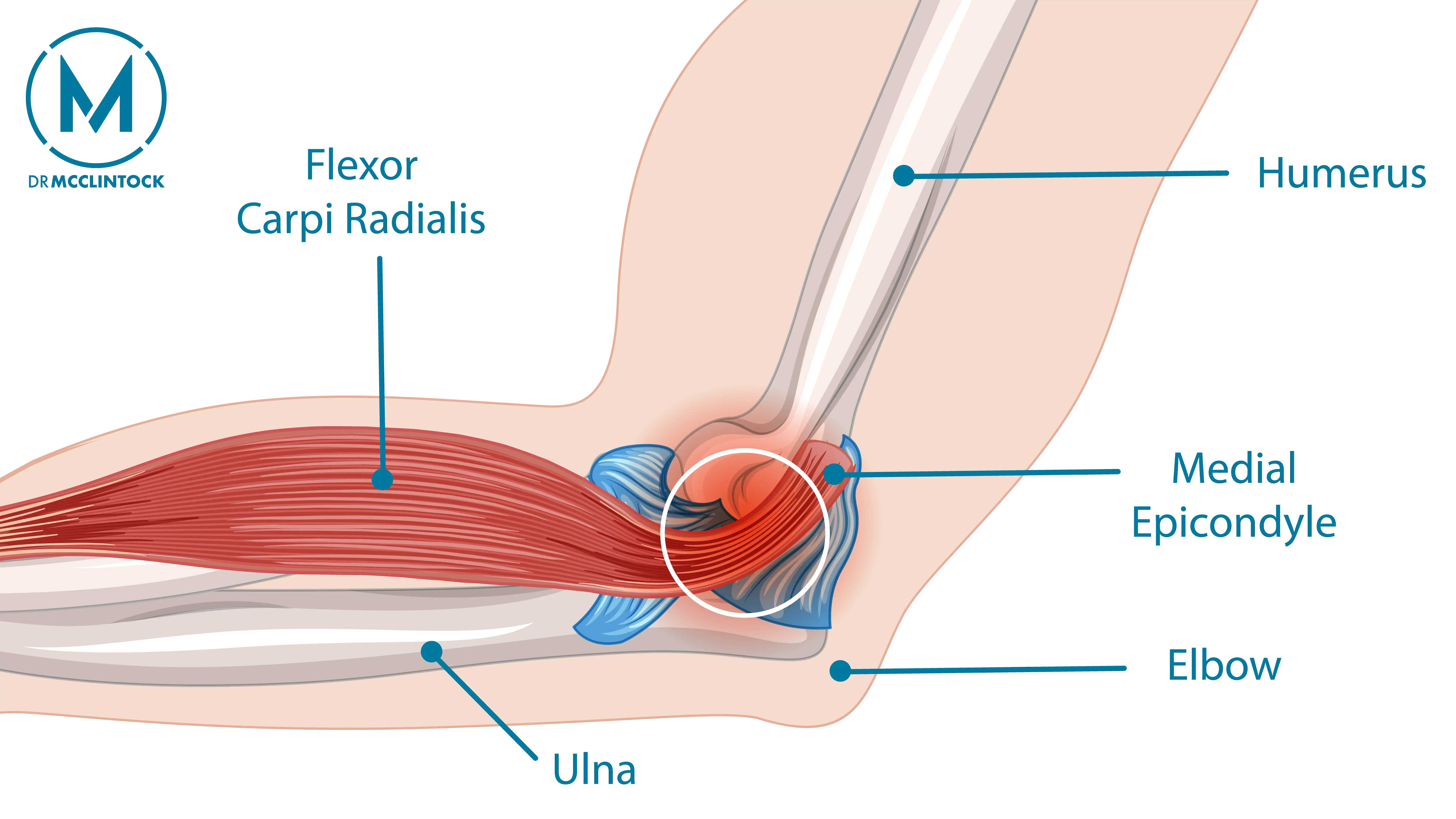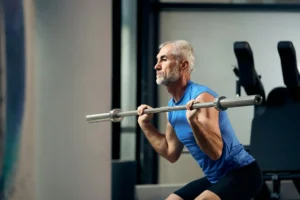If you’re dealing with elbow pain from throwing, quick and effective relief is essential. In this post, we’ll cover everything from immediate pain relief to long-term prevention strategies.
Key Takeaways
- Throwing athletes are at risk for injuries like pitcher’s elbow and thrower’s elbow, primarily due to repetitive stress and improper technique.
- Early recognition of symptoms, such as inner elbow pain and reduced throwing speed, is important for timely diagnosis and treatment.
- Prevention through proper throwing techniques, conditioning, and adherence to throwing guidelines is key to avoiding overuse injuries and maintaining elbow health.
Understanding Throwing Injuries of the Elbow
Throwing athletes frequently develop overuse injuries due to the high stresses placed on the elbow during repetitive throwing motions. Without adequate rest, these forces can lead to pitcher’s elbow and thrower’s elbow, conditions characterized by pain during or after throwing that often impair athletic performance.

Pitcher’s elbow and thrower’s elbow, conditions often seen in baseball pitchers, result from the cumulative stress of repetitive overhand motions. The ulnar collateral ligament (UCL) is particularly vulnerable to this progressive damage.
Prevention begins with regular conditioning and adherence to established pitching guidelines. Additionally, maintaining proper throwing techniques reduces injury risk by distributing stress more evenly across the elbow. Without these precautions, the likelihood of overuse injuries increases significantly, highlighting the importance of technique and training.
Recognizing Symptoms of Elbow Pain From Throwing
The first step in managing and treating elbow injuries is identifying the symptoms. Common symptoms include swelling, inner elbow pain, and decreased range of motion. Athletes with ulnar collateral ligament (UCL) injuries often experience pain on the inner side of their elbow along with a reduction in their throwing speed. Those with valgus extension overload (pitcher’s elbow) may present with elbow swelling and pain, while flexor tendinitis causes inner elbow discomfort during the throwing motion.
Initial warning signs include pain during or after throwing. Specific symptoms like inner elbow pain coupled with throwing velocity loss may indicate UCL injuries or flexor tendinitis. Early recognition of these patterns helps athletes and coaches identify potential injuries early, enabling prompt intervention to prevent further damage.
Diagnosing Elbow Injuries
Accurate diagnosis begins with a physical examination assessing the source of pain and range of motion, along with a thorough patient history detailing regular activities and injury progression.
Diagnostic tools such as X-rays and magnetic resonance imaging (MRI) assess the extent of elbow injuries. While X-rays are often the first step of evaluation, MRIs are helpful for chronic condition diagnosis as they provide a detailed view of soft tissue. In cases suggesting nerve injuries, electrodiagnostic tests may be used to create a targeted treatment plan.
This comprehensive diagnostic approach ensures proper identification and a treatment plan that addresses the root cause of the pain, leading to better treatment and outcomes.
Immediate Relief Measures for Elbow Pain
When elbow pain strikes, prompt intervention can prevent further damage while providing comfort. The RICE method—Rest, Ice, Compression, and Elevation—is generally recommended for initial treatment. Anti-inflammatory medications also play a valuable role in pain control.
Rest and Ice Therapy
The first two steps of the RICE method, rest and ice, are fundamental for alleviating elbow pain. Rest aids recuperation, allowing the injured area to heal without further stress. Applying an ice pack for 15 to 20 minutes several times a day can significantly decrease swelling and pain, soothing inflammation and providing pain relief.
For optimal results, combine these measures with elevation. Consider using pillows or other comfortable supports to keep the elbow elevated above the heart while sitting or lying down. This strategy can help reduce swelling and minimize pain.
Anti-Inflammatory Medications
NSAIDs (non-steroidal anti-inflammatory drugs) like ibuprofen and naproxen are commonly used to reduce inflammation and manage pain in the elbow joint. These medications can provide much-needed relief for athletes with elbow injuries.
Physical Therapy for Elbow Pain
Physical therapy is an important component of treatment. The rehabilitation process typically begins with a period of rest, followed by targeted exercises to restore strength and flexibility. This regimen is structured to help athletes rebuild the functional capacity needed to return to their pre-injury performance levels.
A physical therapist will tailor exercises to address the patient’s particular injury. As rehabilitation progresses, exercises systematically advance in intensity and complexity, gradually enhancing mobility, alleviating pain, and building strength around the elbow.
Strengthening Exercises
Strengthening exercises increase resilience against repetitive stress injuries. Specific exercises that build muscle endurance in the elbow and forearm bolster muscle strength. These exercises reduce the risk of overuse injury and are an integral part of the rehabilitation regimen.
Flexibility and Mobility Exercises
Flexibility and mobility exercises enhance the range of motion, reduce injury risk, and improve overall performance during throwing activities, especially those involving overhead movement. Examples of flexibility exercises include dynamic stretches and specific movements targeting the muscles around the elbow and shoulder. Regularly incorporating these exercises into training routines can help to prevent elbow pain and injury.
Advanced Treatment Options
When conservative measures fail to resolve severe elbow injuries, surgical intervention may become necessary.
Surgical Treatments
Arthroscopy is a minimally invasive surgical procedure, where a surgeon inserts a tiny camera through a small incision to guide the operation. With this method, the surgeon can remove bone spurs and loose fragments in the elbow, addressing issues like valgus extension overload. This technique ensures optimal outcomes while minimizing recovery time.
The ulnar collateral ligament (UCL) is commonly injured in throwing athletes, leading to pain and reduced throwing speed. Especially in cases of a ligament tear, a procedure known as “Tommy John Surgery” may be recommended. This surgery involves replacing the torn UCL with a tissue graft, with the goal of restoring elbow stability and function.
Platelet-Rich Plasma (PRP) Therapy
For athletes with partial UCL tears or other injuries not fully responsive to conservative treatments, Platelet-Rich Plasma (PRP) injections offer a promising alternative. This regenerative approach involves injecting a concentration of the patient’s own platelets into the injured area to accelerate the healing process, offering an advanced treatment option for elbow pain.
Preventing Elbow Pain in Throwing Athletes
Effective prevention of elbow pain in throwing athletes includes the following:
- Proper techniques to help distribute stress evenly across the elbow joint, preventing discomfort.
- Regular conditioning, involving strengthening and mobility exercises to enhance resilience and flexibility.
- Adherence to proven pitching guidelines to ensure enough rest to prevent overuse injuries.
Coaches and parents should monitor young athletes’ throwing practices, especially in children aged 8 to 14 who are especially vulnerable to improper throwing mechanics.
By consistently focusing on these areas, athletes can minimize the risk of elbow pain and improve their performance.
Proper Throwing Techniques
Correct body positioning during throwing can minimize stress on the elbow joint. Athletes should take care to engage the full body, maintain proper arm positioning, follow through, and avoid excessive elbow rotation. Additionally, flexibility exercises help to maintain the elbow joint’s range of motion and prevent stiffness. Regular assessment of throwing mechanics by coaches or sports medicine professionals can help identify and correct technical flaws before they lead to injury.
Warm-Up and Cool-Down Routines
Warm-up routines should take place before all throwing activities. The goal is to prepare muscles and joints for activity, reducing the risk of elbow injuries by increasing blood flow and flexibility. When it comes to preventing injury, these are indispensable in any training routine. Equally important are cool-down routines, which take place following activity to help the body transition back into a resting state and reduce stiffness.
Importance of Medical Attention
Most throwing injuries develop gradually rather than from a single traumatic event, making early recognition and intervention crucial. Conditions like tennis elbow, golfer’s elbow, and pitcher’s elbow, as well as tendon disorders, are common and require proper diagnosis for effective treatment. Accurate diagnosis fuels a personalized treatment plan aimed at symptom relief, healing, and preventing further injuries.
Players should avoid “playing through pain” and see a doctor if symptoms persist. Prompt diagnosis and treatment can prevent a mild elbow injury from becoming serious, allowing athletes to perform at their best without risking further damage.
Summary
In summary, elbow pain from throwing is a common issue that requires timely and effective treatment. Understanding the nature of these injuries, recognizing symptoms early, and seeking appropriate medical attention are important steps in managing elbow pain. Immediate relief measures, physical therapy, and surgical treatment options offer comprehensive solutions to treat and prevent these injuries.
By adhering to proper throwing techniques and maintaining consistent warm-up and cool-down routines, athletes can significantly reduce their risk of elbow injuries. Remember, taking care of your elbow health is essential for long-term performance and enjoyment of the sport. Stay proactive, seek medical advice when needed, and continue to practice safe and effective throwing techniques.
Frequently Asked Questions
What are common symptoms of elbow injuries from throwing?
Common symptoms of elbow injuries from throwing include swelling, pain on the inside of the elbow, decreased range of motion, and reduced throwing speed. Recognizing these signs early is key to effective treatment and prevention.
How can I prevent elbow pain from throwing?
To prevent elbow pain from throwing, focus on using proper techniques, incorporate strengthening and mobility exercises, and ensure a consistent warm-up and cool-down routine. Taking these steps will help protect your elbow and improve your overall throwing performance.
What immediate relief measures can I take for elbow pain?
For immediate relief from elbow pain, first apply the RICE method—Rest, Ice, Compression, and Elevation—and consider taking anti-inflammatory medications such as ibuprofen or naproxen. These steps can effectively alleviate discomfort quickly.
When should I seek medical attention for elbow pain?
You should seek medical attention for elbow pain if symptoms persist, you experience significant pain, or you notice a decrease in performance, especially if these issues impact your daily activities. Prompt evaluation can help prevent further injury.
What are advanced treatment options for severe elbow injuries?
Advanced treatment options for severe elbow injuries include surgical interventions, such as Tommy John Surgery, and regenerative therapies, like Platelet-Rich Plasma (PRP) therapy. These approaches aim to restore function and promote healing.





